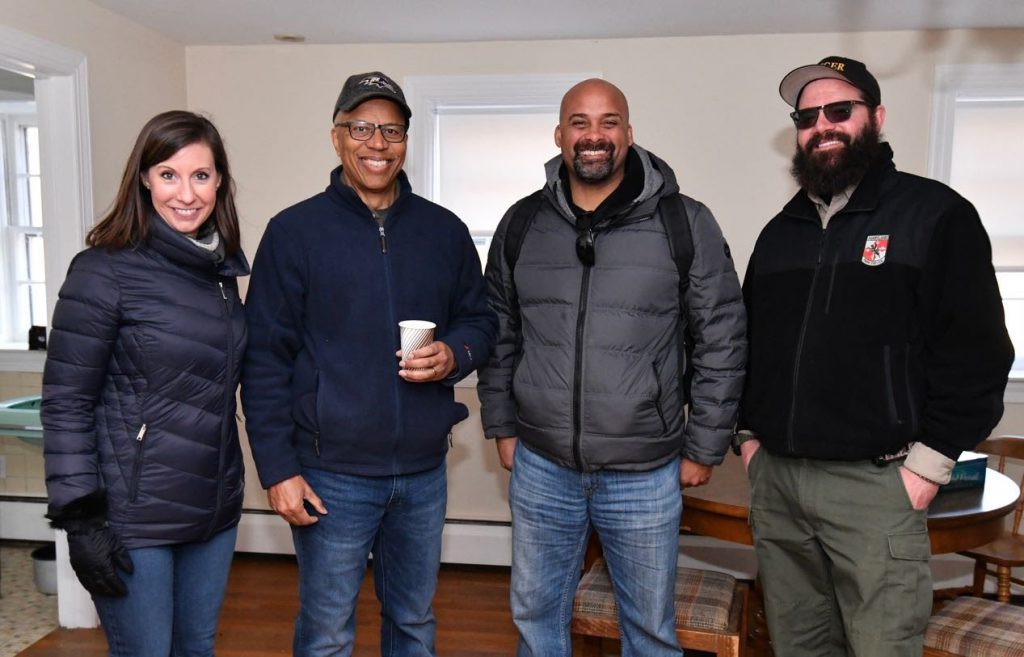Secretary’s Message: February 2020
Black History Month Offers Lessons From Maryland’s Past

Lt. Governor Boyd Rutherford, Secretary Jeannie Haddaway-Riccio, and Deputy Secretary Charles Glass visited Patuxent River State Park with Ranger Shea Neimann
In my home county, we are very proud of the legacy that Talbot County native Frederick Douglass left for our region, our state, and our nation. We are equally proud of the fact that we are the home of “The Hill,” which dates to 1790 and is the oldest known community of freed African Americans in the entire country.
In our neighboring county of Dorchester, there are many tributes to one of their natives, Harriet Tubman, including the Harriet Tubman State Park and Visitor Center and the Harriet Tubman mural just outside of Cambridge. And while the Eastern Shore is rich with African American history, so is the rest of our state.
That is one of the reasons that our department’s Land Preservation and Recreation Plan includes a goal to highlight significant African American sites and stories in public parks, trails, and recreation areas. We work in consultation with community members and organizations such as Outdoor Afro, a national organization that encourages and inspires African American connections and leadership in nature.
There are many examples of this in our state parks today including Point Lookout State Park and Fort Frederick State Park. The Lt. Governor and I recently did a hike at Patuxent River State Park where an interpretive project will soon be underway to permanently preserve the story of Enoch George Howard and the Howard Family. Enoch George was born into slavery in 1814, and in 1857 he was able to purchase freedom for himself and his wife using $3,000 he saved from the sale of produce. After three years, he was able to earn enough to buy the freedom of their five children. In 1862, the Howards struck a deal with their former enslavers and purchased a farm and stone farmhouse which became the Howard family home. An able farmer and entrepreneur, E. George Howard prospered and provided land for a school and church which became the heart of a free African American community on Howard Chapel Road.
The Maryland Park Service has secured funding through the Maryland State Highway Administration Recreational Trails Program to create a new two-mile trail so visitors can experience this rich history for themselves. Passing through a landscape of forests and farm fields, the two-mile trail will connect three sites: the 1790 Gaither-Howard House ruins, the 1885 Greenbury Howard House, which will eventually be restored and stabilized, and the family cemetery, which includes the gravesites of E. George, Martha, and Greenbury Howard.
I encourage everyone to explore our state parks and learn more about these amazing Marylanders who have shaped our history and inspired our future – not just in the month of February, but all throughout the year.
Jeannie Haddaway-Riccio is Secretary of the Maryland Department of Natural Resources.

 1-888-373-7888
1-888-373-7888 233733
233733